Growth of the Empire (A.D.1379to 1406)
Harihara II.--Firuz Shah of Kulbarga --Fresh wars --Assassination of a prince in 1399A.D.--Bukka II.
Bukka I.was succeeded by Harihara II.,his son by his wife Gauri.Nuniz calls the new king "Pureoyre Deorao,"and "Pureoyre"seems to be a rough Portuguese version of the name Harihara;H and P representing the same sound in the Kanarese and Telugu languages.According to the inions,[74]Harihara II.reigned at least twenty years,and he was the first king who gave himself imperial titles under the style of MAHARAJADHIRAJA.He gave many grants to the temples,and consolidated the supremacy of his dynasty over all Southern India.Sayana,brother of Madhavacharya,appears to have been his chief minister,as he was to King Samgama II.[75]
Mudda is mentioned in two inions of A.D.1379and 1382as the king's general.Another of his generals was called Iruga.He was son of Chaicha,minister of Bukka II.His name appears on a pillar in a Jain temple near Kamalapura at Vijayanagar in an inion bearing date A.D.1385;which proves that the king was tolerant in religious matters.There seems also to have been a general named Gunda living in his reign,but his date is uncertain.[76]According to another inion,[77]King Harihara early in his reign expelled the Muhammadans from Goa;and the last inion of his reign at present discovered[78]mentions that one Bachanna Udaiyar was then governor of that place.
The king's wife,or one of his principal wives,was Malladevi,or Mallambika.The extent of his domination is shown by the fact that inions of his reign are found in Mysore,Dharwar,Conjeeveram,Chingleput,and Trichinopoly.[79]He was a worshipper of Siva under the form Virupaksha,but appears to have been singularly tolerant of other religions.The latest actual date of the reign afforded by inions is October 15,A.D.1399.[80]
Ghias-ud-din,a boy of seventeen,eldest son of the late Sultan Mahmud,had succeeded his father on the throne of Kulbarga;but on June 14,1397,[81]he was treacherously blinded during an entertainment by an ambitious slave,after a reign of only one month and twenty days.His younger brother,Shams-ud-din,was then placed on the throne,but after a reign of five months was blinded and deposed by his cousin Firuz,second son of the late Sultan Daud.Firuz was by birth undoubtedly of the elder branch,and he became one of the most celebrated monarchs of his line,ascending the throne on November 15,A.D.1397.[82]He must have then been well advanced in years,as Firishtah says he was "old"in A.D.1419.
The date of the last inion of Harihara II.as yet brought to light is,as before stated,October 15,A.D.1399.There are two inions extant of Bukka II.,his eldest son,both dated in A.D.1406,[83]and several of the latter's successor,the younger brother of Bukka II.,whose name was Devaraya I.,and whose reign lasted till at least A.D.1412.
It will be remembered that the first king of Vijayanagar,Harihara I.,was an old man (Nuniz says "very old"),and reigned seven years.His successor,Bukka,his brother,reigned thirty-seven years according to Nuniz,and perhaps,therefore,it would be best not to assume too great an age for Harihara I.However this may be,it would appear that when the peaceful monarch Harihara II.,son of Bukka I.,came to the throne,his father must have died at a very advanced age,and he himself must have been by no means young.He reigned at least twenty years,as before stated,and we are therefore justified in assuming that at the close of his reign (in A.D.1399)he was quite an old man.With this in our minds,let us turn to Firishtah's narrative of the reign of Firuz Shah Bahmani,beginning with his accession in November A.D.1397.
He tells us that in the Hijra year 801(13th September 1398to 3rd September 1399),month not given --"Dewal Roy of Beejanuggur,with thirty thousand horse and a vast army of foot,invaded the royal territories between the rivers,with a design to reduce the forts of Mudkul and Roijore"(Raichur).
And in a later passage we are told that the campaign was at an end a few months before the end of Hijra 801;I.E.a few months before the end of August A.D.1399.The first movement of the Hindu army must therefore have taken place at the beginning of the cold season of A.D.1398,probably not earlier than December in that year,when the great cotton plains across which the troops had to march were passable.It can hardly be supposed that King Harihara II.,then quite old and always a lover of peace,would without motive have waged this sudden war and himself led his armies into the field,and it seems more likely that the invasion was a bold dash made by his son with the king's permission.The Muhammadan historians admit an unbroken peace of twenty years previous to this date.
It seems,therefore,that the chronicles of Nuniz,the writings of Firishtah,and the extant inions all agree together,and that we must place the death of Harihara II.at the close of the year A.D.1399.Little more can be said about the events of his reign.
The new king,his eldest son,Bukka II.,must have been a man of middle age,as he had a son old enough to take the field with him before he himself came to the throne.
"This king ('Pureoyre'),"says Nuniz,"had a son,who by his death inherited the kingdom,who was called Ajarao;and he reigned forty-three years,in which time he was always at war with the Moors."I can give no explanation as to why Nuniz calls the successor of Harihara II "Ajarao,"nor as to his estimate of forty-three years for his reign.The names and lengths of reigns given to "Ajarao's"successors by our chronicler prove that by "Ajarao"he means two kings,Bukka II.and his successor,Deva Raya I.;and the period covered by their combined reigns was only fourteen years,not forty-three.















